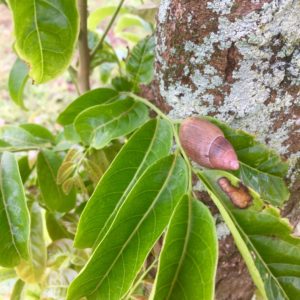ROSY WOLFSNAIL (Past Project)

This volunteer pilot project was unfortunately cancelled due to our determination that dogs are not effective tools in detecting these snails by scent. Read Working Dogs for Conservation’s report from their 2009-2010 feasiblilty project, which reflected similar findings.
What: According to the Global Invasive Species Database (issg.org), Euglandina rosea is considered one of the world’s 100 worst invaders. The presence of Euglandina rosea has been strongly linked to the extinction and decline of numerous snail species in every area where it has been introduced. Due to its voracious and predaceous appetite the rosy wolfsnail is a fierce invasive gastropod that can severely threaten native gastropods. They consume smaller gastropods such as the native Hawaiian snails (Pūpū kuahiwi) which dubs them the “the cannibal snail.”
Why: To support the population growth of native Hawaiian tree snails by preventing the cannibal snails from predating on them. Native snails (Pūpū kuahiwi) evolved here in Hawaii and are found nowhere else in the world. These unique snails don’t even eat plants. They eat algae that grow on the leaves of trees. Pūpū kuahiwi take about five years to reach maturity, whereupon they produce one to seven live offspring a year. They also tend to live on or beneath a single tree, which heightens their vulnerability to predation and habitat change.
In contrast, the rosy wolfsnails feed exclusively on other mollusks and reach maturity in one year. The rosy wolfsnail lays 25 to 45 eggs annually and is highly mobile and quick, thereby vastly outstripping the reproductive rate and range of the Pūpū kuahiwi.
Read more about the endangered Hawaiian snails and the challenges they face in this article.
Where: While rosy wolfsnails may be found throughout the islands, the target areas include the predator exclosures that provide habitat for the endangered Hawaiian tree snails.
